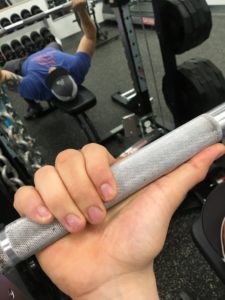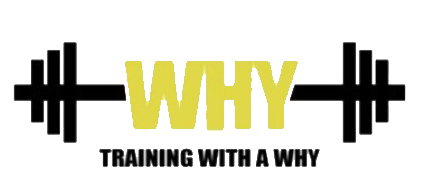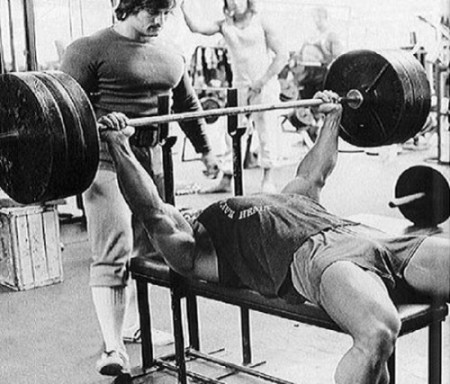Yes, It Is Awesome
Ahh the bench press. The holy grail of exercises. “How much can you bench?” is asked thousands of times a day (an educated guess) in gyms across the world. To most novice lifters, it’s the standard by which their peers judge how strong they are. Side note, experienced and mature lifters know that this is simply just one exercise and the judgment of strength is relative to what strength means to an individual or group of individuals but I digress. No matter how much emphasis you put on the bench press it’s hard to argue the exhilarating feeling of pressing some big numbers. It looks like a simple lift with not much technique, if any at all, and compared to the squat and deadlift it is a much simpler lift; however, there is technique involved that can be easily overlooked.
4 Points of Contact
There are four points of contact when bench pressing. This means that there are four places your body has to be in contact with at all times throughout the lift, not counting your hands gripping the bar, and they are:
- Both feet must remain in contact with the ground.
- Your butt must stay in contact with the bench.
- Your upper back and shoulders must stay in contact with the bench.
- Your head must stay in contact with the bench.
Tips:
- If you are on the shorter side and it’s difficult for your feet to completely reach the ground when lying on the bench you can put plates under your feet so that they can act as the ground.
- Bend your knees so that your feet are back towards your butt and push your knees out. This will help keep your lower body tight which is commonly overlooked.
- Your butt and upper back must stay in contact with the bench but it is completely fine to have the arch of the lower back.
Hand Position
We are talking about the conventional bench press here and not a close-grip or some other variation so our hand placement will reflect that.
- Take the end of your thumb on each hand and place it right where the knurling (rough part on the bar) begins. See picture below.
- Straighten your thumb fully on both hands and the spot where the rest of your hand is gripping the bar is where you are going to grip it. See picture below.
Tips:
- The end goal for the conventional bench press is for our forearms to be directly over our elbows when benching. This ensure that’s our wrist, forearm, and elbow are all aligned.
- Start with your grip as we just discussed and then look at your wrist, forearm, and elbow to ensure that all three are aligned and if they aren’t then adjust accordingly by moving your hands either in or out.


Eye Position
Your eye position is something that is extremely underrated when discussing the techniques of bench pressing. During the bench press we want our eyes to be on a constant spot throughout the entire set. Pick a spot on the ceiling and look at the same spot during every rep. Our eyes being on the same spot throughout the set is important because it helps us ensure that the bar is traveling a consistent path from rep to rep. An inconsistent bar path is something that can destroy a person’s set even if they are physically strong enough to get one or two more reps. If you have bench pressed you have certainly had reps where you know you hit either too high or too low on your chest and ruined the momentum of the set. This was most likely caused by your eyes moving around causing the bar to move away from its correct path.
Pinching the Pencil
Pinching the pencil is something almost every weekend warrior or novice lifter doesn’t realize needs to occur. Pinching the pencil refers to the pinching of the shoulder blades as if you were trying to hold a pencil between them. By doing this you will create a base or platform to press from. This base will allow you to stay tighter and have more control of the weight throughout the set. It will also protect your shoulders by restricting the range of motion as the bar will not travel as far with your shoulders pinched compared to having your shoulder blades relaxed. See video below.
Tips:
- If you do this correctly it will at first feel like you are not completing the rep because the bar isn’t traveling as far.
- This takes time to perfect so make sure you practice this with light weight and make doing this consistently a priority.
Videos Here: Not Pinching the Pencil (Wrong) Pinching the Pencil Correctly
Breathing
Breathing correctly can make or break a rep or set. The tighter you are the stronger you are. The better you breathe the tighter you can be and thus the stronger you can be. We stay tight by filling our bellies with air. This can go for any barbell lift. Think of your spine like a telephone pole. If we breathe improperly and don’t fill our bellies with air our telephone pole (our spine) can waver back and forth when under stress. However, if we fill our bellies up with air this air acts as cement poured around our telephone pole (our spine) and it is much sturdier and less likely to waver when stress is placed upon it. How we accomplish this:
- Breathe in, focusing on the air going to your stomach instead of your chest, at the beginning (top) of the rep.
- Hold this breath until you return to the starting position (top).
- Breathe out at the top and then breathe in again.
- Repeat this process for the remainder of the set.
Tips:
- We want to try and hold our breath for the entirety of the rep but if you are nearing the end of the set and are struggling to complete a rep you can breathe out on the way up at your sticking point.
- By breathing out while trying to force a rep this release of air will act as a kind of “turbo” to help us finish.
Enjoy!
So there they are. All the tips and hidden gems to help you take full advantage of what is most likely your most enjoyable barbell lift. My hope is that you take these tips, no matter how insignificant they may seem, seriously because they will help increase your bench. If one or more of these tips are brand new to you my advice is to practice them with lighter weight and work your way back up as anything new added to your technique will take a little time to perfect.
As always, thanks for reading and please subscribe to this site so that you stay up to date on all the new articles coming soon!



I really like the commentary on really squeezing your shoulder blades together. It is one of the most important things to do when setting yourself up in my opinion to tuck your shoulders back, lock them back, squeeze and press. A friend of mine actually hurt his shoulder by using poor form and not locking his shoulders into place. Sloppy benching like this can really take a toll on the body if you practice it enough.
One resource that helped me a ton was actually a program called critical bench. It is chalk full of tips and tricks that you wouldn’t really think of that actually make a huge difference in your bench when implemented correctly. I actually wrote a little review of the program anyone can check out- http://fitnessaspiration.com/critical-bench-review/